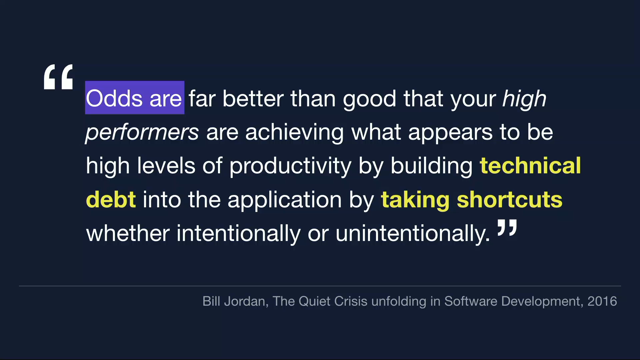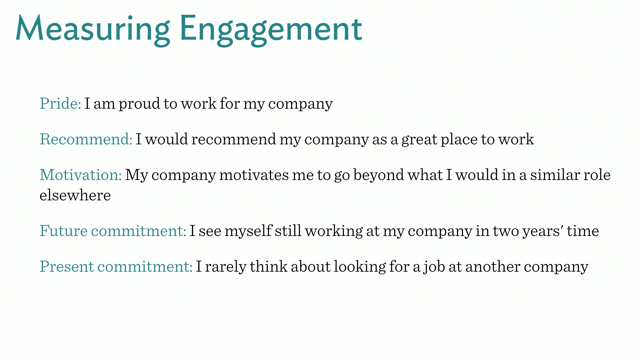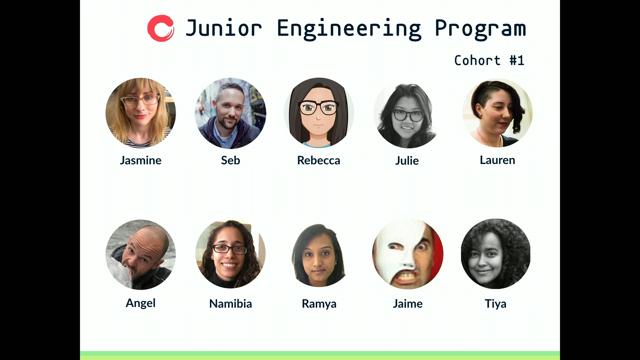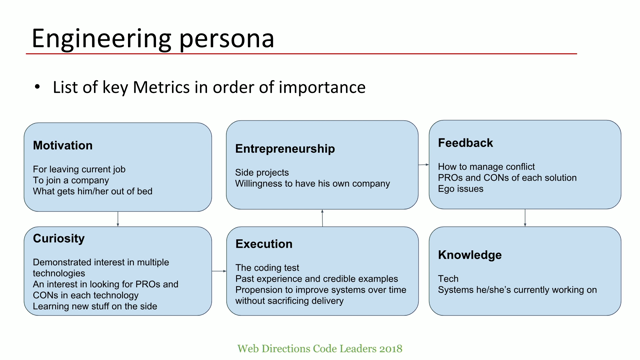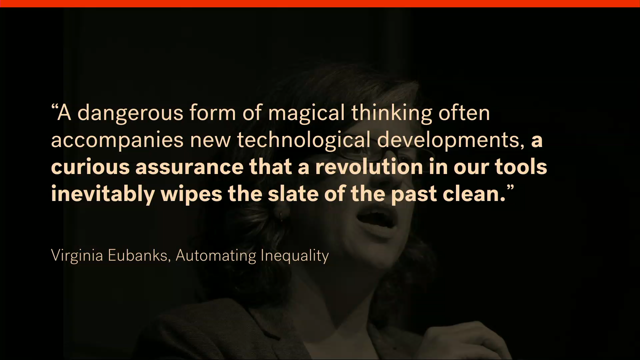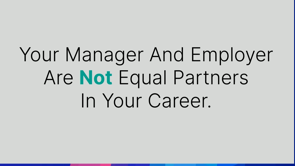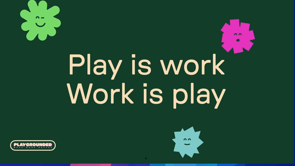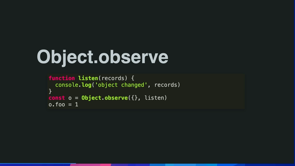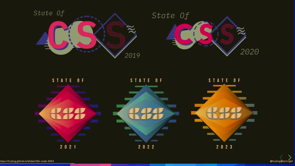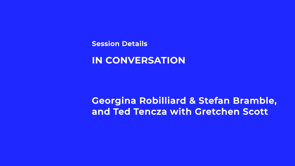Follow me, I know what I’m doing… (I think)
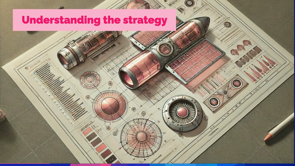
Introduction and Acknowledgement
Andrew Fisher begins by acknowledging the Wurundjeri people and introduces the topic of stepping up into senior leadership roles.
Audience Check-in
Andrew conducts a quick poll to gauge the audience's current leadership experience (leading individual contributors, a few layers of reports, or large teams).
Visualization Exercise
Andrew asks the audience to visualize leading a team two levels up from their current role, emphasizing the challenges and opportunities that come with increased responsibility.
The Importance of General Management Skills
Andrew highlights the increasing importance of general management skills as leaders progress in their careers, even for those with strong technical backgrounds.
Personal Experience and Learning Curve
Andrew shares his personal experience of transitioning into a senior leadership role and the steep learning curve he encountered, emphasizing the need for preparation.
Key Areas for Development
Andrew outlines the key areas that the talk will cover: business strategy and drivers, communication and relationship building, and team organization.
Strategy and Focus
Andrew discusses the importance of a clear and well-articulated strategy for organizational alignment and focus, emphasizing the need to ask "why" questions.
Organizational Drivers
Andrew explains the concept of organizational drivers – how an organization makes and spends money – and how understanding them can help leaders maximize their impact.
Knowing Your Customers
Andrew stresses the crucial importance of direct interaction with customers to gain firsthand intelligence and validate approaches. He encourages the audience to connect with customer-facing teams.
Actionable Steps for Understanding Strategy and Customers
Andrew provides specific actions: schedule one-on-ones with senior leaders, talk to finance/channel teams, and interact directly with customers.
Communication and Relationships
Andrew shifts the focus to communication and relationship building, highlighting their impact on team and organizational success.
Techniques for Effective Communication
Andrew discusses two techniques: asking seemingly obvious questions to uncover assumptions and listening first, speaking last, in group settings to encourage diverse perspectives.
The Power of Relationships
Andrew emphasizes the importance of building a vast network of relationships across the organization for intelligence gathering and facilitating connections.
Relationship Mapping
Andrew recommends creating a relationship map similar to a stakeholder map, identifying key individuals for information, unblocking progress, and ensuring buy-in.
Actionable Step for Building Relationships
Andrew sets homework for the audience: reach out to someone new in the organization and schedule a meeting.
Team Design and Ways of Working
Andrew discusses the importance of designing diverse teams and establishing clear ways of working, focusing on information sharing and authority.
Capability Model
Andrew introduces the concept of a capability model to identify team strengths and weaknesses, advocating for delegating both areas of strength and weakness.
Team Working Agreements
Andrew discusses the importance of clear working agreements to empower teams and ensure alignment, suggesting tools like team canvases or social contracts.
Actionable Step for Team Organization
Andrew sets homework: build a capability model and conduct a team working session.
Resources and Next Steps
Andrew suggests seeking out training opportunities, finding a mentor, and putting the discussed skills into practice.
Conclusion and Call to Action
Andrew concludes by emphasizing the importance of leadership development for technology professionals and encourages the audience to prepare for senior roles.
Contact Information and Additional Resources
Andrew provides his contact information and a QR code/link for additional resources and follow-up content.
Good morning.
Before beginning, I just want to pay my respects to elders past and present of the Wurundjeri people on whose land we gather today, and to which sovereignty was never ceded.
It's an absolute pleasure here to be here with all of you this morning, fellow leaders.
As Craig mentioned, my name's Andrew Fisher.
I'm really excited to be talking to all of you about stepping up, stepping up into much more senior leadership roles, for the next 30 minutes.
I want to get a quick show of hands, right?
I want to get a sense of where everybody is on their particular journey today and also for all of you to get an understanding of where each other are as well.
Who's got reports that are individual contributors?
Put your hands up.
Okay, alright, so third half.
Okay, what about people who have got a couple layers of reports that come into them?
Okay, a couple.
Alright, and what about three or more, so you know, leading quite big teams?
Yep, one or two.
Excellent.
Alright.
We're mostly leaders here who have got ICs or maybe we're about to step into that role as well for the first time.
Now, I want you to close your eyes for a second.
I want you to imagine that you're standing in front of your team about to run a team meeting.
But, I want you to think about that two levels up from where you are right now in terms of reporting, right?
You're now also leading teams that are not part of your direct experience.
So maybe you've got a design team reporting into you now.
Maybe you've got a marketing team.
Everyone's looking at you.
They're expecting you to be able to articulate the priorities, the direction for the next quarter, and your vision for the team and the organization going forward.
Any ideas for what you're going to say?
Put on the spot?
Maybe there's a few of you who are going like, YES!
Finally, I've got power!
I can fix all the problems that are wrong in this organization and get it sorted out.
There's some of you who are probably sitting there going, There is no way you can pay me enough money to do that job at all.
But wherever you see it on that spectrum, if you're serious about leadership, and I think you all are by virtue of coming along here today and spending your time, there's going to become a point where all of that experience in kind of leading technology teams accounts for way less than your skills in kind of general management.
That's just a fact.
So I got an opportunity to take that step up, several years ago now, and even with extensive leadership experience running technology teams for a long time, I wasn't prepared.
The gaps became immediately apparent to me when I started working in an exec team.
I realized this was going to be a super steep learning curve.
That I had to climb.
And in retrospect, this was probably the most difficult role transition that I've done since stepping up into that kind of original tech lead role many, years ago.
So today I want to talk to all of you about some of the gaps that you're likely to face coming out of technology or practice leadership, but also give you some of the areas that you can think about, start to develop regardless of where you are in your career.
The great news is that management and leadership are skills and they're skills that can be developed if you spend the time to work on them.
We're going to cover off, these particular areas.
So we'll start by developing a bit of a, more of an understanding about how our business strategy works, the drivers and things like that.
We're going to look at how to communicate as a leader and kind of build relationships to supercharge our impact.
And then I'll give you some ways to think about organizing your team as well.
So let's dive in.
Starting with strategy, and thinking about the drivers that build our understanding around that, and then we'll get to know our customers a little bit as well.
Now, I'm not going to touch on the really mechanical kind of stuff, like building investment cases, or any of that sort of thing, or, risk management, stuff like that.
This is all really, important stuff and you have to learn it, but there's heaps of good examples out there and I suspect some of you, you're probably feeding into those processes already, so you're starting to build that experience regardless.
Now, starting at the top with our strategy, when you have a clear, articulated strategy, everything just flows outwards from that.
When everyone's aligned to that strategy as well, organization becomes effortless.
Everyone's pulling together in the same way, and stuff just happens.
And it's magical.
At its heart, strategy is really about creating focus.
And it's as much about the things that you're not doing As it is the things that you are.
It's putting the blinkers on it, being really directed about where you're going.
But if my strategy isn't clear, if it's not well articulated, or if it's not well understood by the organization, everything gets further and further out of alignment as we go on.
The errors compound throughout organization.
As a leader, one of your main jobs is really to be very clear about both the immediate, and the wider long term goals that you're trying, striving for.
You want to start getting comfortable, asking difficult questions, starting to ask about, the problem that we're solving, being clear with the organization about what it is that we're actually trying to do.
Now, for example, in your next planning meeting, irrespective of where you're reporting now, you'll have some team planning sessions, ask lots of questions as normal, but instead of focusing in on the what, are we doing, that sort of stuff, start to focus in on the why.
Why is this important for my customers?
Why is this important to the organization?
How does this start to ladder up into our organizational or team strategy?
And start focusing your attention on those sorts of things.
The reason we need to do this is because it anchors the work that we're doing into the broader context and we, so as a result, we can maximize our impact, and impact is something I'm going to come back to time and time again.
Now, alongside our business strategy, we also have our organizational drivers.
Now, drivers really come down to how does my organization make money and how does it spend money.
This is a bit simplistic, but, this is the work, right?
Where the complexity starts to come in is really about how you go about doing that as an organization.
And if you can understand how the various parts of your core business work, then you can start to understand where you can focus your attention so that you can drive the biggest impact.
And we're all about impact.
So as an example, if I'm a retailer and maybe I've got, 10 percent of my sales come from online and the rest come from my physical stores, there's a couple of ways that I can think about those drivers to determine the activities where I should spend my time.
So if I can grow my online channel, without sacrificing any of my physical store sales, then I've just added to my top line revenue.
So I've increased my in, right?
Great.
If I can optimize something on my physical sales though, my physical store sales, and it touches every single sale that goes through there, then I've just made 90 percent of my revenue more efficient, and so I've decreased my money out.
These are the big levers that we can start to pull.
Now, conversely, what about if I optimize something in my online channel?
The reality is, that's only going to have 10 percent impact because of the size of that channel.
Now, that may still be worthwhile.
You still have to do the work to uncover that.
But now we can start to think about the relative priority of things.
And we can start to think about where we deliver the most impact across the org.
And when we start to understand how the business fits together, and what are the big levers that we can pull, we can determine whether or not an initiative or a strategy that we're working on, is still considered a good idea or not, right?
And we can grade things appropriately and decide, ultimately, whether or not to pursue it, because strategy is about what we're not doing.
Now, if we think about strategy as our kind of like overarching goals, we've got our business drivers that kind of, give us some leverage, we also then have to think about our customers because that's where all of it comes together and meets, right?
So quick show of hands, who during the month of June, we're on the 19th now, has spent time having a direct interaction with one of your customers, end customers?
Okay.
A handful.
Put your hands down if you're a consultant.
All right.
Not so many, right?
As a leader, you must speak to your customers.
You have to understand your customers and work with them firsthand.
You have to walk in their shoes.
You've got to be able to hear them and understand the business as a result.
Building this understanding means that you're able to bring first hand intelligence back into your team, and that's gold, right?
But it also means that you can validate approaches that you're thinking about when you're still in planning stage.
You can go and test them out, right?
You can also see the impact of the initiatives that you're delivering as well, first hand as well, rather than waiting for someone to tell you.
If you haven't, go and talk to your customer and marketing teams.
They've got loads of information on this side of things.
Stuff, right?
Dig into those reports, get a, bit of an understanding that way.
But it's all too easy for us, especially in tech, to sit in headquarters, and not interact directly with our customers.
But if you talk to them, if you really understand, what they're up to, then you start to appreciate those drivers of the organization in action, and you start to see how your strategy is manifesting on the ground and directly influencing people.
Or not, as is sometimes the case.
Here's a few things that you can do to just get started on this, right away.
Firstly, organize a one on one, two levels up from where you are now.
Un, unpick the strategy.
Go and talk to your kind of leaders, right?
Go and talk to your finance team or your channel leaders, to understand the drivers.
Get to understand how the business ticks, right?
And next week, if I ask that same question about who spent time with a customer, I want a hundred percent of these hands up.
You have to get out and talk to your customers.
We've talked about strategy and drivers and customers.
Now let's turn our attention a little bit more to, communications and relationships and how to maximize our impact.
Because that's how it all starts to come together in the org.
All of you will have seen how much of an impact, both good and bad communications can have.
Who here has ever said something, maybe it was a bit loose to your team, and it got misunderstood or misconstrued, okay, alright, most of them, all of the rest of you, you're either about to join that club or you're lying.
When you get it right good communications, has a really lasting impact, both across your team and across the organization, but communications isn't the whole of it.
It's also about building relationships, right?
So creating good relationships allows us to create impact across a much wider span of our organization, as well.
Now, developing both of these skills doesn't require any particular seniority, it's something that you can do even if you have no reports, right?
And you can work on them practically.
So we'll touch on both sides of these, but we'll talk about communications first.
Now obviously, first and foremost, we're striving for clarity in everything that we're doing to try and get our message across clearly.
With a good team, your job is to get really high quality information into that team, so that they can then get on and do the things that they're really good at, right?
Garbage in, garbage out.
We know about that, right?
But it works for teams as well, right?
Now there's a couple of techniques that we can use to really help with this.
The first is, asking questions, right?
Questions is something that you'll come back to a lot with me, right?
But, in particular, it's asking questions as leaders that might seem a bit obvious or stupid.
Why is that, you ask?
Often as a leader, you can be the person who asks the unaskable question at the table.
Because you don't need to lose face, right?
And doing that you give permission to everybody else in the room to do the same thing.
And so this allows us to uncover assumptions, it allows us to get really into the detail of those things, and we don't leave something on the table that we all come back to six months later and go, if only someone had asked that really dumb question, because we all made an assumption and walked away.
The other technique that we can use is really when we're starting to consolidate ideas or we're coming to a decision, right?
And particularly when we're in a group.
Now, one of the things that you need to realize is as you get more senior in an organization or your career, you have to be mindful about your voice and the weight that it carries with other people, particularly people who are more junior than you.
Now to balance this, one of the things that we can do, and you can all start to do this now, is be the last person to speak, right?
Listen first and speak last.
Now you can be direct about it.
You can just say, Hey, I want to hear from all of you first.
And then I'll sum up or give you my thoughts as well.
Or you can just start the conversation, in a particular way.
You just say, Hey, Jesse, why don't you go first?
We'll go around the table.
So it comes back around to you, right?
Firstly, this is going to give you much more diverse perspectives, because everybody's going to share their thoughts, right?
And that might inform your position a little bit better as well, so that you can come to a decision a bit more rounded.
But additionally, it means that you're not putting your hand on the scales, right?
And that everybody's perspective shifts back towards yours, right?
And this will happen.
Because there will be people in a team that will just want to agree with you because you're the leader.
And that, happens.
Your job isn't necessarily to have all the answers.
It's not to be the one that goes, Yep, this is what we're doing.
It's to facilitate getting to that answer.
Often you're the one that has to take accountability for the decisions that you, take as a team.
And so consequently, if you get the best possible information into that team, and all the kind of perspectives, then you're gonna set yourself up so that you can carry that decision and that accountability really effectively.
The other side of this then is relationships.
Now, this is an area that I think is undervalued by a lot of people in organizations.
And if you get it right, it's an absolute super power, right?
I'm sharing the super power skills with all of you this morning.
Great leaders and you see them in action, right?
You'll have all come across these people.
They build vast networks of relationships across their organization.
It doesn't matter what level they're interacting with, what function, they build these huge networks across the org.
To start with, this, again helps with intelligence gathering, what pain points has that team got?
Maybe we can help them out.
And then, How's that project going?
Oh gosh, they're delayed.
That's going to have an impact on something that we're working on as well.
We get our feelers out and we can understand this.
And it's mostly about listening, engaging with people, asking questions, that sort of stuff.
But once you've established that big network of relationships across your organization, it also means you can facilitate connections between them.
For example, if you are having a conversation with Alex, and they've been talking about some sort of pain point that they've had, last week, but a couple of weeks ago, you spoke to Joe, and they've actually solved or gone some of the way to solving that.
You can now bring the two of them together.
Alex, Joe, you're both working on the same problem in this org.
Why don't you work together, solve this for yourselves, because that'll solve your immediate problems, but also solve this more widely, right?
And now you're creating organizational value and bringing people together, even if they don't necessarily report to you and your team.
You're facilitating those connections.
So how do we go about doing this intentionally?
Now, if you've worked in a product team, I suspect many of you have, you'll be familiar with a stakeholder map.
This is pretty much exactly the same thing, but it's you at the center, right?
So it's your relationships, not just the stakeholders of the team.
And what you're trying to do is understand who should you be spending time with across your organization to understand what's going on.
So who are my, information sources?
Who also do I need to spend time with to unblock things, get things done?
These are my bulldozers to clear the path.
But also, who do I need to spend time with, because they need to be taken on the journey on some particular project that you're working on, because you don't want those people turning into detractors, so you need to invest time there.
As you do this though, don't, forget your externals as well.
Your partners, key customers, other parties that might be related to your organization.
They're part of this whole ecosystem as well.
And so then, once you map all of this out, with your map in hand, you just go and start building the kind of the links that either don't exist or are really weak.
It's spending time with them, talking to them, engaging with them, asking questions.
When you get a new role, this is super, super easy because you walk in and just go, who are all the people that we need to talk to?
Hey, our teams work together.
I'd really like to understand what we can do better, what needs, what's working well, that sort of stuff.
But even without necessarily having that as an excuse, just reach out to people.
People generally love it when you show a genuine interest in their particular area, and you're showing that you want to work together, right?
Few people are going to say no.
So your homework, you're going to get lots of homework in this talk.
Start building out that relationship map.
And by the end of today, I want all of you to have sent a note to somebody in your organization that you don't know well, and set up a meeting for next week to understand more.
We've talked about comms, relationships.
Now let's focus in on our team.
How do we design our team, and think about the ways that we work.
Now, when you start to lead much bigger, multidisciplinary teams in particular, success is very much in the agency of other people, right?
You have to leverage other people to get stuff done.
Now, as a leader, one of the benefits is that you generally get to pick your team.
You determine your people and you determine the ways that you're going to work together.
And that's really ace.
We're going to look then at.
Thinking about our structure and then also our ways of working.
So let's start thinking about, the makeup of our team, and specifically all of your direct reports.
So we'll just focus on that side of things.
Now, it goes without saying that this team should be as diverse as you can possibly get it.
You want the mix of viewpoints, you want different backgrounds, different skills, so that you can drive better outcomes.
Now, that is a whole other talk that I'm not gonna give right now.
And you should all Conffab that, cause there's been some great talks on this, in the past.
For your team, the things that you're wanting to, think about are what do you do in the team and what are your skills and capabilities, but also, what are each of your reports doing and what are their capabilities?
Because you're trying to maximize the strengths of the team in totality.
Now this sounds really obvious, right?
Obviously we all want to play to our strengths, but I see teams over and over again, not being clear about this stuff.
And it's all a bit wishy washy and they're not sure who's doing what or why, or they've got glaring holes.
Now, the way I think about doing this is to use a capability model, which some of you may or may not have seen before.
And you start by breaking down all the capabilities does our team need to do in order to be successful against our mission, right?
And with this, you need to overlay the areas that you're really good at and that you're really poor at.
And we'll start with, being poor.
Starting with the what are you bad at piece, which, is highlighted in the pink.
The way to address your gaps, as a leader is by using the expertise of your directs to fill it in, because you all have to work together.
The person to fill this main gap that you have, should be someone that has extensive credibility in that particular domain, right?
They should also be quite senior relative to you, and they should be senior enough that they are obviously your second in command in your team.
Because you want them, to really hold that credibility.
You need to delegate to that person.
You need to really set them up, empower them, to be the go to expert in that particular area.
Now this becomes a role that allows you to help to scale your team's communications, but also your influence across the organization.
Because now, you've basically got two leaders in your team that can now be in two different places at the same time with a cohesive message.
So you've just scaled up how effective you can be out across the org.
Now I want you to flip to the area that you're really good at.
So this should be easy to identify.
Whatever that is, counterintuitively, you want to delegate this out as well, right?
You need a really capable person to step into this, and then you need to step away, entirely step away.
How many times have you seen a leader who knows one particular domain really well, and then they spend all their time in there?
And all those other things, all those other boxes, don't get any attention whatsoever, right?
It happens all the time.
Don't be a meddler, right?
Because you know this area particularly well, then you know what good looks like.
It should be easy for all of you to be able to identify an absolutely fantastic person who can just, get on and do that at least as well as you can and ideally even better.
And then you delegate it out and you let that person have the space to just get on and do it, right?
Once we've got our time two anchors in place, then for the other roles in our kind of team, we can start to mix it up a little bit.
This is where we could experiment a little bit more.
This is where you can give people an opportunity to step up.
We can bring in a junior if we've got a lot of ICs.
Or we can give someone an opportunity to cross skill.
Because they've got a little bit of space here.
And the capability model helps us do this really effectively because it allows you to be clear about what the needs are as a, team, and what's the best way to go about filling them.
So you've got a really clear guide on that.
These are the roles as well, where you can spend a little bit more time as the leader.
You can, work with those people, growing that capability, knowing, that those other two areas, the kind of strong point and the weak point, are well and truly taken care of, by those kind of heavy hitters.
So you can help the center ones on, some delivery, maybe you're doing some coaching or mentoring with those kind of individuals, right?
But you should also be encouraging those two key people that I talked about before, to be able to do some peer leadership, some peer mentoring and stuff like that too, because now we're starting to build a treadmill of leadership through our organization, right?
A pipeline.
And so that way we help with, succession planning and stuff like that.
Now, once we've got our team structure, we can now start to think about how we're going to work together, as a team.
And primarily this is really about how we're going to share information, and how, who's got authority and what sort of authority is.
It's not what tools we're using, anything like that.
And being clear about this stuff, means that no one's kind of dancing around going Oh, am I allowed to do that?
Is that someone else?
All of that sort of stuff, right?
It means that you empower your team to just get on and get things done.
And they know that they've got backup from everybody else in the team, because everyone's clear on what they're doing.
So your role as a leader in this scenario is to facilitate, it's to, get the discussion out and surface, things like assumptions about role responsibilities, or implied responsibilities that might exist.
Address the capability gaps that might be in the team as well, right?
And get all of that stuff out on the table.
Lots of squads have got different ways of doing this.
That's a team canvas, but you could use a social contract.
You could, there's lots and lots of ways to do this, right?
Use whatever works most effectively for you or that you're familiar with.
That's really the key.
The aim is to have the discussion, right?
Being clear about how you want to work together and who is doing what.
The mechanics, doesn't matter so much.
So obviously.
some more homework.
Get out, build that capability model if you haven't got one and start working together on this stuff as a team.
Get that team working session booked in.
So we've now got our team organised, and how you want to work together.
So let's get bring this all home and give you some resources to work with.
So as I wrap up, besides all the homework I gave you, I want you to, think about a few different bits and pieces, for you as individuals.
Are there courses?
I can go on from a training standpoint.
Does my business have things like leadership or management training baked into the way that they work?
Can I get some of my training subsidized either through work or through other programs that you might be eligible for as well, right?
I want you to all go out and get yourself a mentor.
Particularly if you haven't ever had one, do you know someone in your organization who you really look up to and think, oh, they're a great leader, they've got similar background as me or a style that I aspire to, that sort of thing.
Conversely, maybe it's someone external to your organization.
The key with this though is just to reach out, right?
Just reach out.
The worst case scenario on this is that whoever you reached out to says no, but they're really flattered that you asked, right?
The best case is you get a mentor.
How awesome is that, right?
So there's no losing.
And I want you to think about developing your skills, right?
Many of the things I talked about you can put into practice right now.
And start trying things out with your team.
Start developing some of these skills and getting the learning in before you're going to need it for real.
Now we've covered a lot of ground today.
We've talked about the importance of understanding our strategy and drivers, how we communicate effectively and build relationships with intentionality, and we also touched on setting up our people the right way.
Being a leader is really hard, right?
But, it is a privilege.
I'm probably biased, however, I really think that given the way technology and digital permeate every single part of customer experience these days, and also how technology enables every other function in the organisation, I think, that we have a lot to offer in senior leadership roles, in organizations.
And the really great thing is that outside of traditionally tech businesses, we're now starting to see those roles appear, right?
And that's really, exciting, particularly for some of you who are at the first stages of your career.
So it's time to get ready for this sort of stuff, because your career, the career ceiling that you had previously is no longer CTO or CIO.
It's whatever role you want to do in the organization, including the top jobs.
I wasn't really prepared for my step up out of practice leadership, and into that wider role, and I had to learn really, fast.
And thankfully, I had a lot of people around me who were absolutely vested in my success, and I'm forever grateful for that.
They supported me really effectively.
The earlier you start on this particular journey, the easier it's going to be to develop those skills, and bring them to bear when you need them.
There are all my details.
That QR code and the link takes you to some more notes, some resources, all of that sort of stuff.
If this has been useful, then leave your details on that page.
I'll share out some additional content over time.
And with that, I'm going to make way for Ben to talk about some other stepping up components, and also the rest of the code leader speakers.
And I just want to thank the Web Directions team for continuing to invest in this really, important topic.
It's, really great.
Thank you all.
You lead a team. In your business, you’re an acknowledged expert in your domain. You’re kicking goals. You’ve got this.
Then, suddenly, the leader of your wider function departs. Now, it’s your job to step into their shoes. Overnight, your team has quadrupled in size. You find yourself at the helm of an extensive hierarchy, with direct reports who themselves have direct reports, and so on. You’ve transitioned from a practice manager to an enterprise leader. Colleagues across the business expect you to have all the answers. Also, you’re now responsible for a significant chunk of the company’s sales— 10%, to be precise.
At the team’s all-hands meeting, all eyes are on you, waiting for words of wisdom. Are you ready?
I wasn’t. Despite over a decade of leadership experience, I found myself unprepared for such a drastic change. My aim in this talk is to prepare you for what might be the most significant career transition you’ll ever face: moving from expertise leader to general management.
